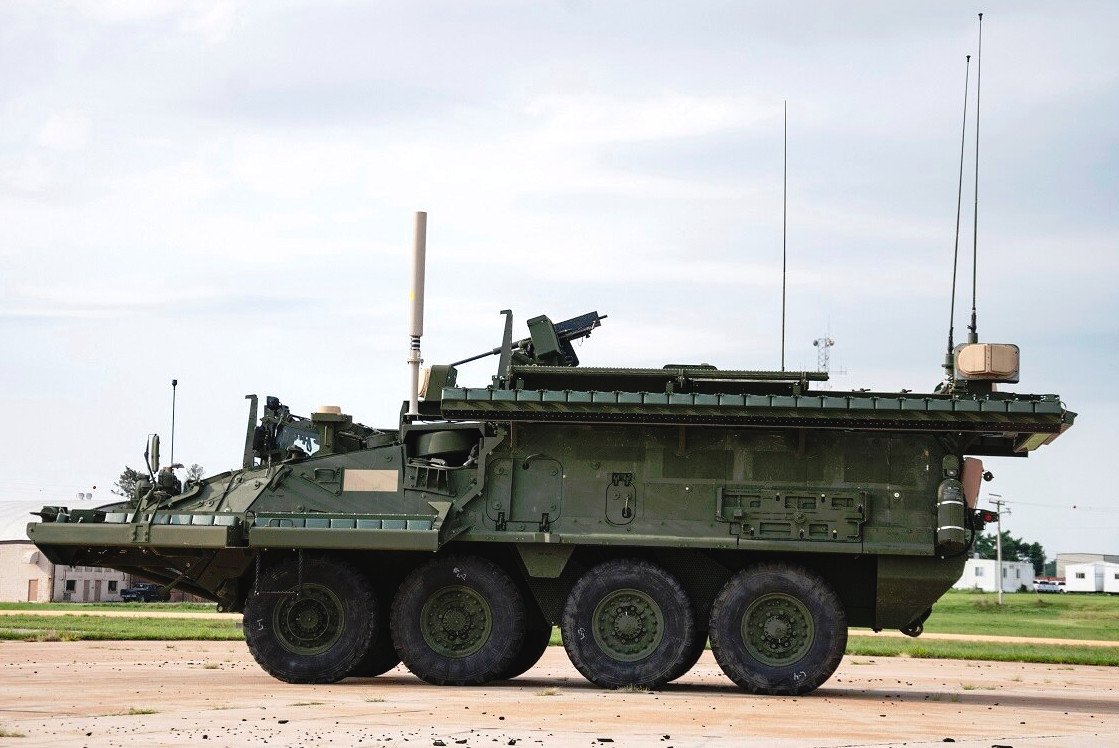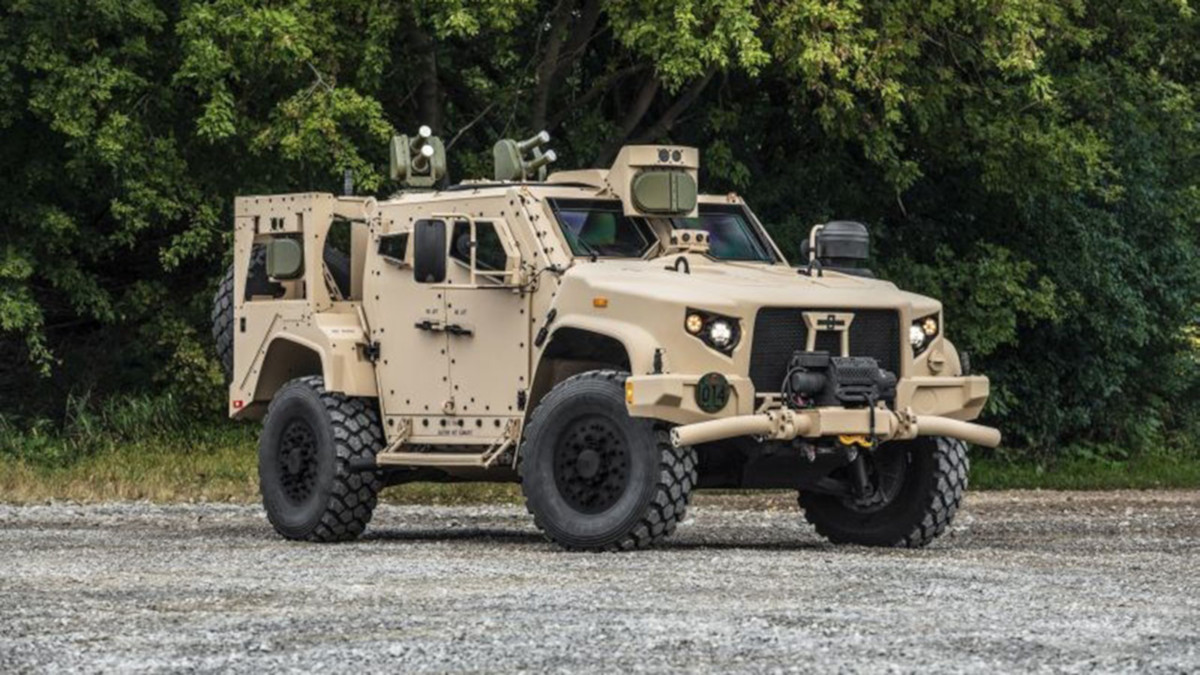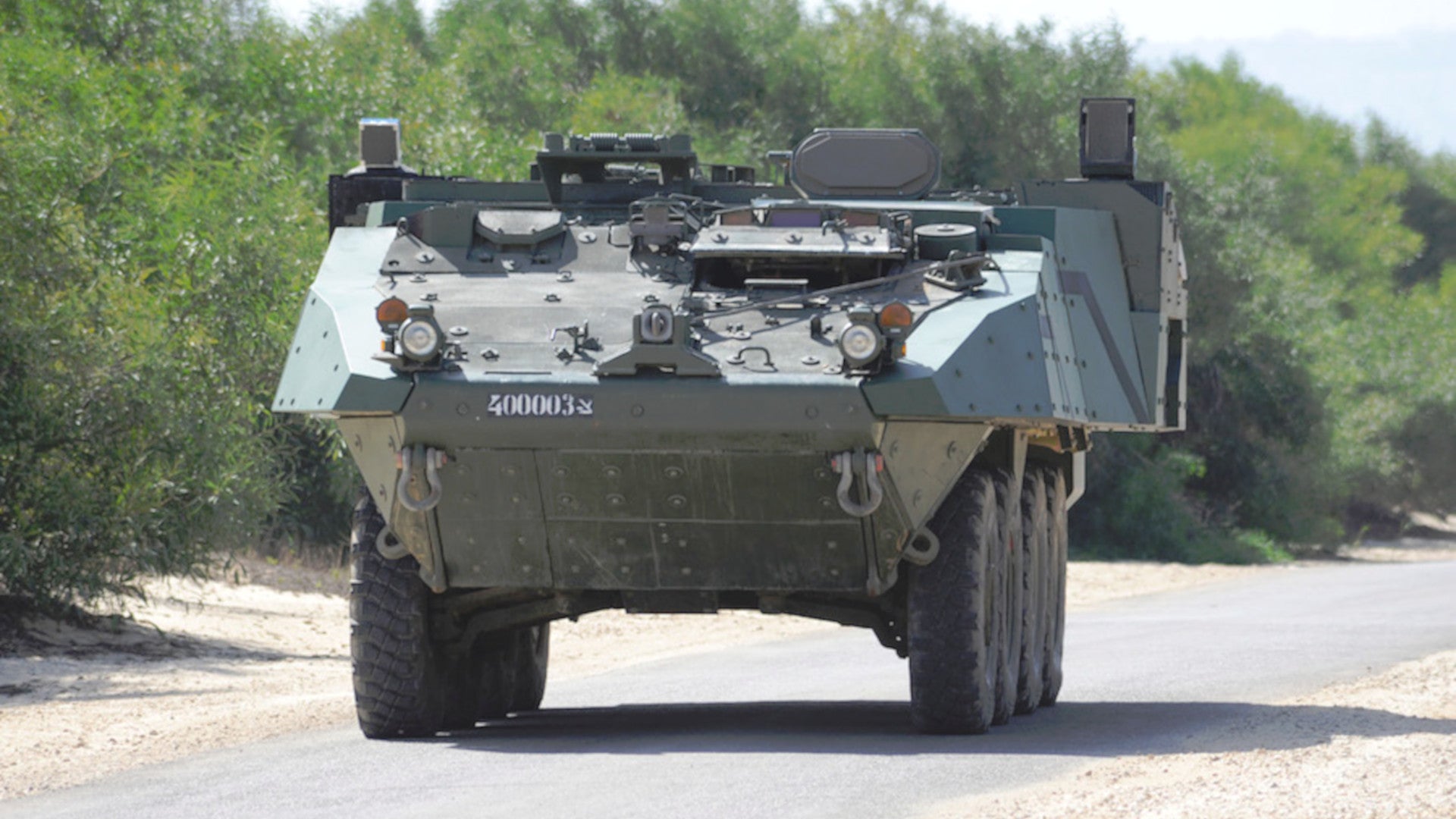The U.S. Army has still not settled on an active protection system, or APS, for its Stryker wheeled armored vehicles, despite having evaluated four different options in the last two and a half years. The service is now eying additional tests of two of those systems, a medium-weight variant of Israeli firm Rafael’s combat-proven Trophy and the Active Defense System from Germany’s Rheinmetall.
Defense News got the update on the hunt for an APS for Strykers from U.S. Army Colonel Glenn Dean, the Army’s Stryker Project Manager, in an interview on June 7, 2019. The service had previously revealed publicly it would need another year to select a system in April 2019. This came around five months after it had first begun evaluating Trophy-MV and the Active Defense System (ADS).
“Unfortunately for Stryker, we have not found a system that is suitable for the platform,” Dean told Defense News. “Both Rheinmetall and the medium-weight Trophy, both have maturity challenges, but the bottom line is that they turned out to not be a suitable fit for Stryker.”
Trophy-MV and ADS are what are known as “hard-kill” APS, meaning that they units explosives or kinetic projectiles to physically destroy or deflect incoming threats, including as anti-tank rockets or guided missiles. These types of systems use some combination of sensors, such as infrared cameras or small radars, to spot the hostile projectile and cue the explosives or kinetic interceptors.


Trophy uses radars to cue turrets that fire kinetic projectiles, while ADS uses both radars and cameras coupled with strategically placed banks of explosives. You can read more about these systems in detail, respectively, here and here.
“We did see some potential in [these] systems,” Dean added. “It is our desire to continue to evaluate them further so we can understand them at a greater level of detail.”
The Army can’t be thrilled at the alternative, which would be to identify more potential APS options that would work with the Stryker. In December 2016, the service began evaluating two other hard-kill systems, Iron Fist, another Israeli product from IMI Systems, and Iron Curtain, which American defense contractor Artis had developed. Iron Fist, like Trophy, used kinetic interceptors, while Iron Curtain involved a ring of explosive charges akin to ADS.
Iron Curtain won that head-to-head evaluation, but the Army rejected the system in August 2018 due to difficulties in integrating it into the Stryker platform. The service did separately select Iron Fist as an interim APS for its Bradley Fighting Vehicles. It has also picked the full-size Trophy system to go onto its M1 Abrams tanks.

“It has proven difficult for us to find a system that is entirely suitable for integration [onto the Stryker],” Dean acknowledged in his interview with Defense News. “It has challenges in its space, weight and power integration.”
The Army sees all of these systems as “interim” solutions until its Modular Active Protection Systems (MAPS) program bears fruit. The goal of MAPS is to develop a common, open-architecture control system that will allow the service to combine APS system components into the most optimal configuration for specific vehicles. This could mean doing things like combining the interceptors from the Trophy system with the sensor suite from ADS. MAPS, which you can read about in more detail here, would also enable the rapid substitution or replacement of components as new and advanced options become available.

The complete MAPS family of components will also include so-called “soft-kill” options, such as electronic warfare jammers and lasers, which can scramble or confuse sensors and fuzing systems on incoming threats, as well as advanced smoke screening systems. Certain electronic warfare systems may even be able to physically destroy electronic components of a rocket or missile using focused bursts of high-power microwave energy.
“Soft-kill may ultimately prove to be particularly well suited for Stryker,” Dean said. The Army has been employing electronic warfare jammers to defeat improvised explosive devices for years now and has begun expanding on those same systems to give them even more potent electronic attack capabilities. It is possible that the service could leverage those developments to turn them into a more robust APS option. But soft-kill systems typically work best as part of a layered defensive suite that also includes hard-kill options. The ability to have a mix of systems could become more important as time goes on and threats evolve to include new and improve countermeasures.
The Army officer also noted that even if becomes apparent that no configuration of Trophy-MV and ADS is a practical option for the Stryker, it is possible that these systems could find their way onto other armored vehicles. The service has not picked an APS for its new Armored Multi-Purpose Vehicle (AMPV) family. It is also in the early stages of acquiring a Bradley replacement, known as the Optionally Manned Fighting Vehicle (OMFV), and a light tank as part of the Mobile Protected Firepower (MPF) program, both of which have APS requirements.
With the growing threat of advanced unguided anti-tank rockets and guided anti-tank missiles, as well as the increasing proliferation of these systems to non-state actors, APS manufacturers are also pitching their various designs as options for light combat vehicles and tactical trucks, too. For example, there are proposals to install Iron Fist, Iron Curtain, and a lightweight version of Trophy on the new Joint Light Tactical Vehicle (JLTV), which is now beginning to enter Army and U.S. Marine Corps service. The Marines may eventually have their own APS requirements for their new Amphibious Combat Vehicles, too.

Hopefully, in the coming months, the Army will be able to finally find a suitable defensive system, or suite of systems, for it Strykers to help shield them from rockets and anti-tank missiles.
Contact the author: joe@thedrive.com
